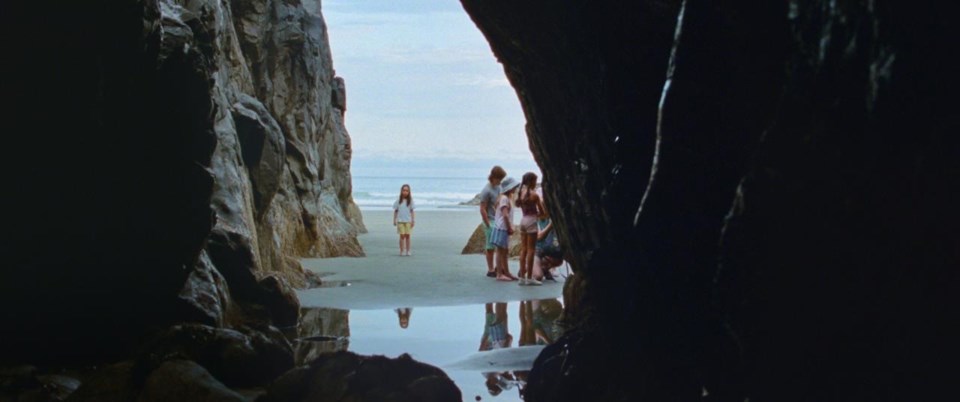VANCOUVER ‚ÄĒ As Meredith Hama-Brown‚Äôs debut feature film ‚ÄúSeagrass‚ÄĚ made waves during its festival run last fall, the ¬ť∂Ļīę√Ĺ”≥Ľ≠writer-director says she heard from many Japanese Canadians who thanked her for exploring a side of their experience rarely depicted on screen.
Ally Maki stars as Judith, a Japanese Canadian woman grieving the recent loss of her mother and struggling with her cultural identity as she brings her family to a couples' therapy retreat on a British Columbia island. The film tackles mixed-race relationship conflicts, intergenerational trauma, casual racism and young sibling dynamics.
‚ÄúThere are a lot of details in the film that I've seen in my own family and that other people have told me that they've also experienced, particularly how Judith has lost touch with a lot of her own personal history and her family history,‚ÄĚ Hama-Brown, whose mother is Japanese Canadian, says on a video call from Vancouver.
Like Judith, Hama-Brown says there are gaps in what she knows about the experiences of her grandparents, who were among more than 22,000 Japanese Canadians forced into internment camps by the federal government during the Second World War.
‚ÄúThat's something that's very common for Japanese Canadians and Americans, because my grandparents‚Äô generation really didn't want to talk about what happened. I think it was such a traumatic experience and they just wanted to move past it.‚ÄĚ
‚ÄúSeagrass,‚ÄĚ which hits theatres across North America on Friday, is a tense and tangled family drama charting the ups and downs of an interracial marriage on the verge of collapse.
Set in the 1990s, the film sees Judith’s marriage to her white Canadian husband Steve, played by Luke Roberts, fall apart as they struggle to connect at group therapy sessions for couples, while their children explore the island’s verdant landscape. Along the way, they become frenemies with a seemingly more functional couple, played by Chris Pang and Sarah Gadon.
Earlier this month, ‚ÄúSeagrass‚ÄĚ was named best B.C. film at the ¬ť∂Ļīę√Ĺ”≥Ľ≠Film Critics Circle Awards, where Hama-Brown also won the best director prize. Last year, it made Toronto International Film Festival‚Äôs Canada‚Äôs Top Ten list and took home the International Film Critics Prize at the fest.
Hama-Brown, who grew up in the ‚Äô90s, mines some of her own experiences in the film, similar to the way her award-winning short ‚ÄúBroken Bunny‚ÄĚ dealt with themes of shattered childhood innocence. But she stresses that the plot is very much fictional.
‚ÄúMy family never went to this retreat altogether, and although my parents are divorced, I never saw them argue. They had a polar opposite divorce. My dad is the polar opposite of Steve.‚ÄĚ
Steve comes off as culturally insensitive and poorly equipped to deal with Judith’s intergenerational trauma. At one point, he makes a racist joke about Pang’s character, a Chinese Australian.
Hama-Brown says such microaggressions were a product of the era ‚ÄúSeagrass‚ÄĚ takes place in.
‚ÄúIn the ‚Äô90s, no one really knew how to say, ‚ÄėThat's racist or that doesn't feel right.‚Äô Or when people tried, it would be disregarded as a joke. It's been really good exploring that type of racism in a film, because I think it can be extremely insidious and it's something that is still so prevalent.‚ÄĚ
‚ÄúSeagrass‚ÄĚ is also a coming-of-age story as the couple‚Äôs children Stephanie and Emmy, played by Vancouver‚Äôs Nyha Huang Breitkreuz and Victoria‚Äôs Remy Marthaller, experience the fallout of their family crumbling.
Hama-Brown says the team found the pair of young actors through a ‚Äúvery laborious casting process‚ÄĚ in which they ‚Äúwrote to every single kids' acting school in Canada.‚ÄĚ Breitkreuz‚Äôs audition tape came in a week and a half before they started shooting. The film marks both actors‚Äô first major roles in a movie.
‚ÄúThank goodness everything came together because it's very challenging casting kids and finding people who can carry these really challenging roles. They have mature themes, but there's also a ton of dialogue.‚ÄĚ
Just as challenging to scout out were the film‚Äôs locations. Finding a retreat for a month during the summer of 2022 was nearly impossible as they were all booked up, but Hama-Brown and cinematographer Norm Li discovered one on Gabriola Island called The Haven. Group therapy sessions are actually held there in real life, although Hama-Brown jokes ‚Äúthey‚Äôre probably much better than the ones portrayed in the film.‚ÄĚ
When Emmy is shown an oceanside cave that other children tell her is haunted, she becomes obsessed with it, convinced the ghost of her recently deceased grandmother is living there.
Hama-Brown says the cave, located at Tofino‚Äôs Rosie Bay, was not only hard to find but ‚Äúexceptionally difficult‚ÄĚ to film in.
‚ÄúWhen the tide comes in, you will get trapped, so we only had three hours to work in the cave when we were there. Plus, we had a whole bunch of kids who we were bringing there and some gear that we had to walk in. It was something I was just terrified about doing until we got to it.‚ÄĚ
In the end, the scenes were well worth it. Hama-Brown says the tidal, seaweed-draped setting was integral to the film.
‚ÄúThe sense of place meant a lot to me. It‚Äôs the fact that the family is going to this remote island. I wanted to have the sense of being away and surrounded by water and almost trapped. I wanted there to be this sense of isolation.‚ÄĚ
This report by The Canadian Press was first published Feb. 22, 2024.
Alex Nino Gheciu, The Canadian Press
Note to readers: This is a corrected story. A previous version erroneously referred to Gabriola Island as Gabriel Island.



